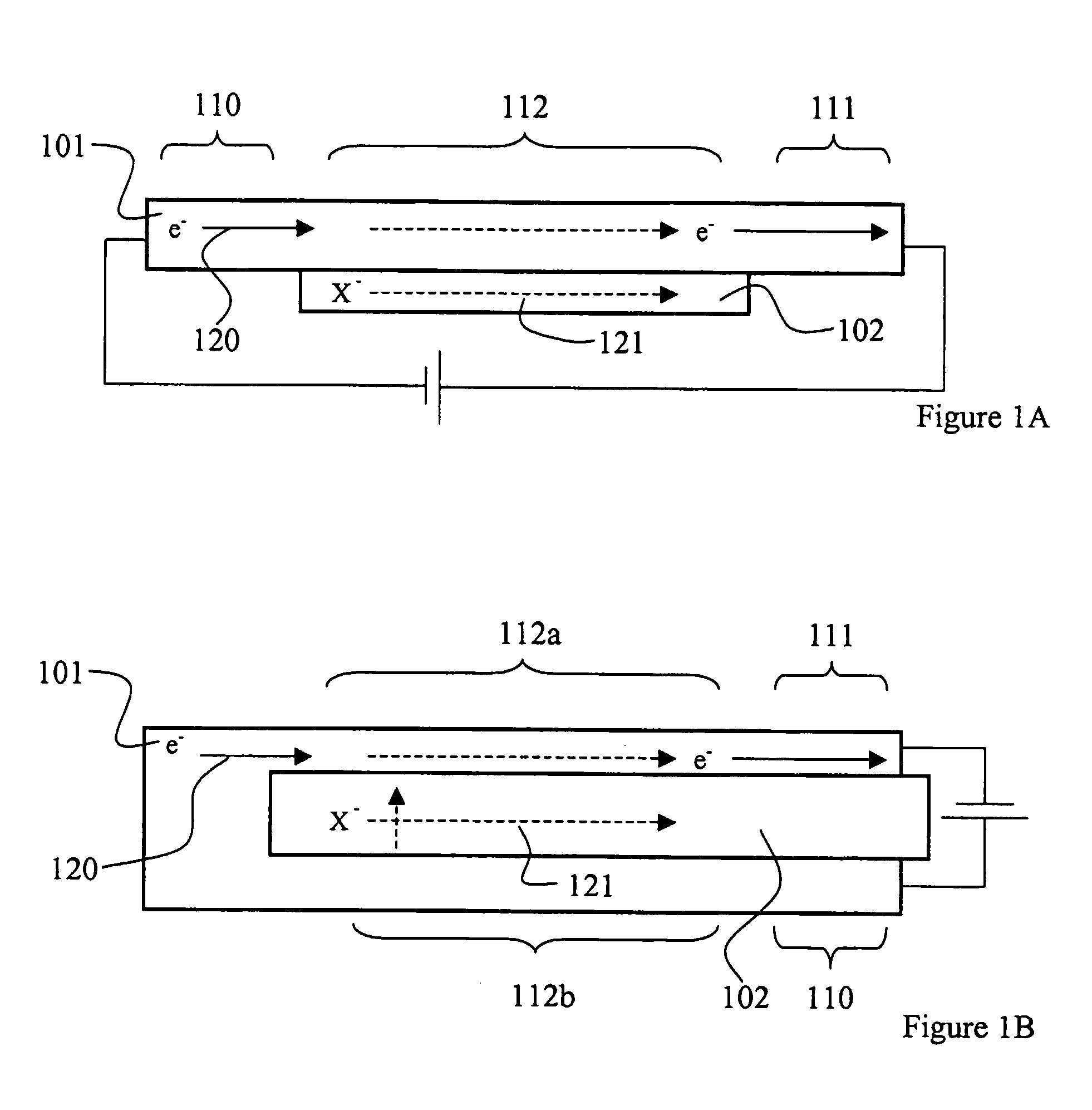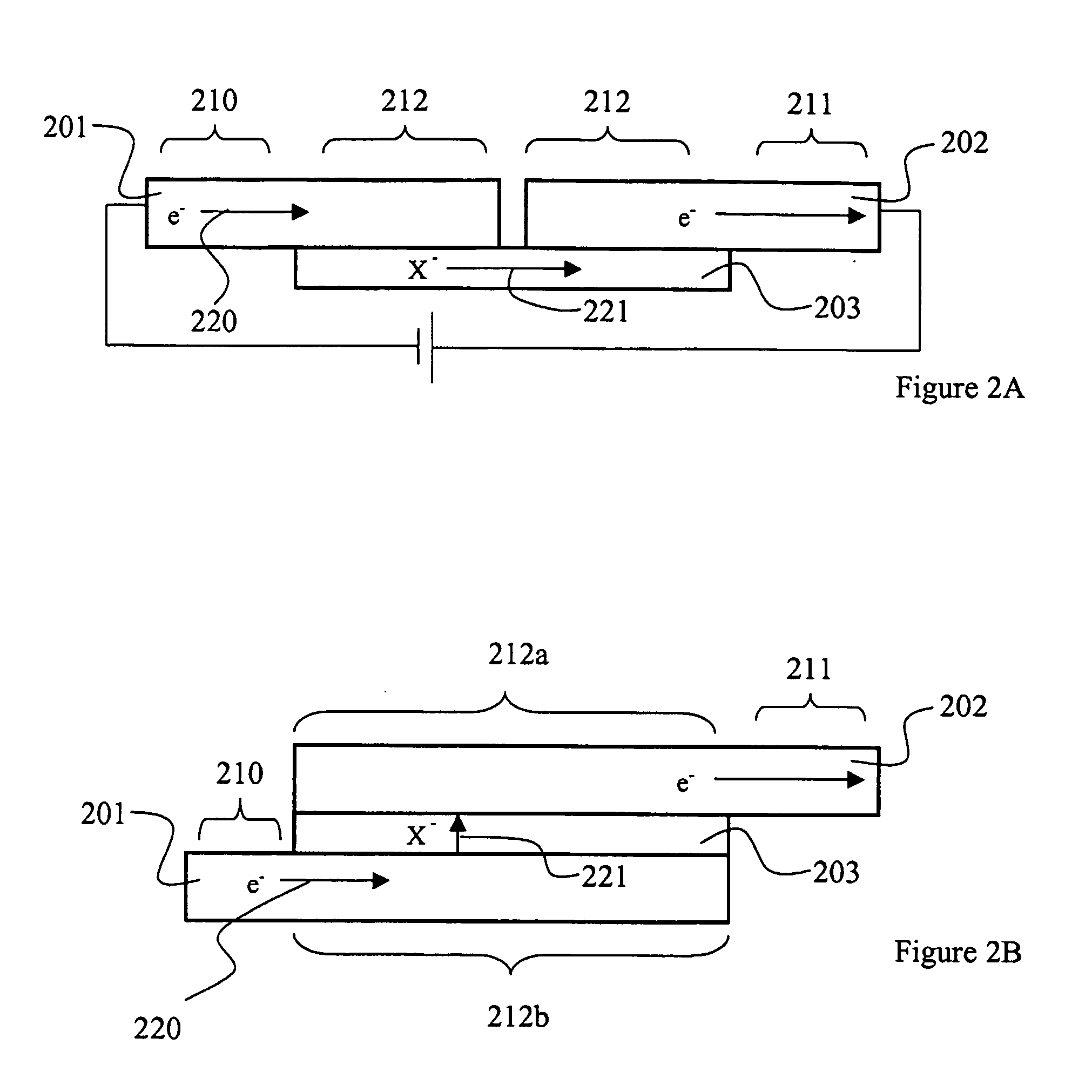Wettability Switch
a technology of wetting control and switch, which is applied in the field of wetting control switch, can solve the problems of difficult adaptation to large-scale and cost-effective manufacturing, severe restrictions on the properties of molecule monolayers, and the technique described in the above article is somewhat restricted, etc., to achieve rapid and accurate wetting control, easy to drive and control, and easy to remove
- Summary
- Abstract
- Description
- Claims
- Application Information
AI Technical Summary
Benefits of technology
Problems solved by technology
Method used
Image
Examples
Embodiment Construction
[0059]The invention will now be described in further detail. First, various structures will be described in order to exemplify the broad range of structural designs that are envisaged. Second, various materials that can be used for the invention will be discussed. Third, methods of manufacturing are discussed, and fourth, various experiments performed on test structures will be described. Finally, a number of envisaged applications for the wettability switch will be outlined.
Fundamental Structures
[0060]Even though the actual structure that is employed for a certain embodiment may take many different shapes, many of them can be categorized into one of four fundamental structures, which in the following are denoted Structure 1, Structure 2, Structure 3, and Structure 4, respectively.
Structure 1
[0061]Structure 1 is illustrated by the cross-sectional views of FIGS. 1a and 1b. The structure comprises an electrochemically active polymer element 101 and an electrolyte element 102. The poly...
PUM
| Property | Measurement | Unit |
|---|---|---|
| Wettability | aaaaa | aaaaa |
| Wetting tension | aaaaa | aaaaa |
Abstract
Description
Claims
Application Information
 Login to View More
Login to View More - R&D
- Intellectual Property
- Life Sciences
- Materials
- Tech Scout
- Unparalleled Data Quality
- Higher Quality Content
- 60% Fewer Hallucinations
Browse by: Latest US Patents, China's latest patents, Technical Efficacy Thesaurus, Application Domain, Technology Topic, Popular Technical Reports.
© 2025 PatSnap. All rights reserved.Legal|Privacy policy|Modern Slavery Act Transparency Statement|Sitemap|About US| Contact US: help@patsnap.com



